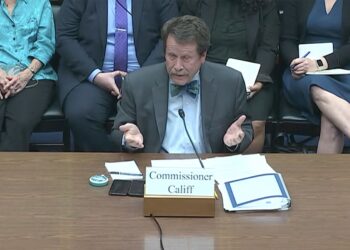Approximately 20% of people who attempted suicide did not meet criteria for a psychiatric disorder, challenging clinical consensus on who is at risk for suicidal behavior, according to a cross-sectional study.
Using data from nearly 1,950 respondents to a nationally representative survey, 6.2% had no apparent lifetime psychiatric diagnoses when surveyed, and 13.4% made their first suicide attempt prior to psychiatric disorder onset, reported Maria A. Oquendo, MD, PhD, of the Perelman School of Medicine at the University of Pennsylvania in Philadelphia, and co-authors.
“From a clinical standpoint, these findings suggest that a history of suicide attempts should be obtained regardless of whether the person has a psychiatric disorder given that suicide attempts are associated with future attempts and future suicide,” they wrote in JAMA Psychiatry.
In an email to MedPage Today, Oquendo noted that their findings suggest “that screening only those with psychiatric disorders or symptoms will miss a meaningful amount of people at risk.”
These findings should prompt some reconsideration about the approaches used to identify suicide risk both in clinical practices and on the policy level, she added. “Policymakers need to seriously consider universal screening for suicide risk, weighing benefits in terms of morbidity and mortality and the cost of implementing such an approach.”
No significant differences in age or sex were observed in the percentage of those with lifetime suicide attempts without psychiatric disorders, but women were more likely than men to attempt suicide in the year of psychiatric disorder onset (14.9% vs 8.6%, PP
Oquendo and co-authors noted that previous studies have shown similar findings, including the National Comorbidity Survey Replication study that reported that 20% of individuals without a prior mental health diagnosis had a suicide attempt.
However, they added that those study authors attributed their findings to probable “masked disorder,” such as depression.
Oquendo explained that a review of the available research suggested that there could be nosological implications as well. If lifetime suicide attempts are occurring in patients with no acknowledged psychiatric disorders, it could mean that suicide attempts are pathological unto themselves, she said.
“Should there be a separate diagnostic category for suicidal behavior?” she posited. “We and others have written extensively about the rationale for and benefits of having a separate disorder and code for suicidal behavior and also about potential drawbacks and risks.”
For this cross-sectional study, the authors used survey data from the National Epidemiologic Study of Addictions and Related Conditions III (NESARC-III), a face-to-face survey with a nationally representative sample of the U.S. civilian noninstitutionalized population ages 20 to 65 from April 2012 to June 2013. Data from the NESARC, Wave 2 survey from August 2004 to September 2005 were used for replication.
In total, 1,948 individuals reported at least one suicide attempt during their lifetime; 66.8% were women, and 70.9% were white.
The study was limited by the fact that the NESARC-III dataset includes the most common major psychiatric diagnoses, but not less common diagnoses, such as autism spectrum, obsessive-compulsive, and intermittent explosive disorders, which have also been associated with suicide attempts. Additionally, the survey relied on retrospective self-reporting, so accuracy may have been affected by various factors, including recall bias or reluctance to report.
Disclosures
Oquendo reported receiving royalties from the Research Foundation for Mental Hygiene and personal fees from MindMed SAB, Sage Therapeutics SAB, and Alkermes.
The other authors reported no relevant financial relationships.
Primary Source
JAMA Psychiatry
Source Reference: Oquendo MA, et al “Lifetime suicide attempts in otherwise psychiatrically healthy individuals” JAMA Psychiatry 2024; DOI: 10.1001/jamapsychiatry.2023.5672.
Source link : https://www.medpagetoday.com/psychiatry/generalpsychiatry/108835
Author :
Publish date : 2024-02-21 14:19:21
Copyright for syndicated content belongs to the linked Source.








